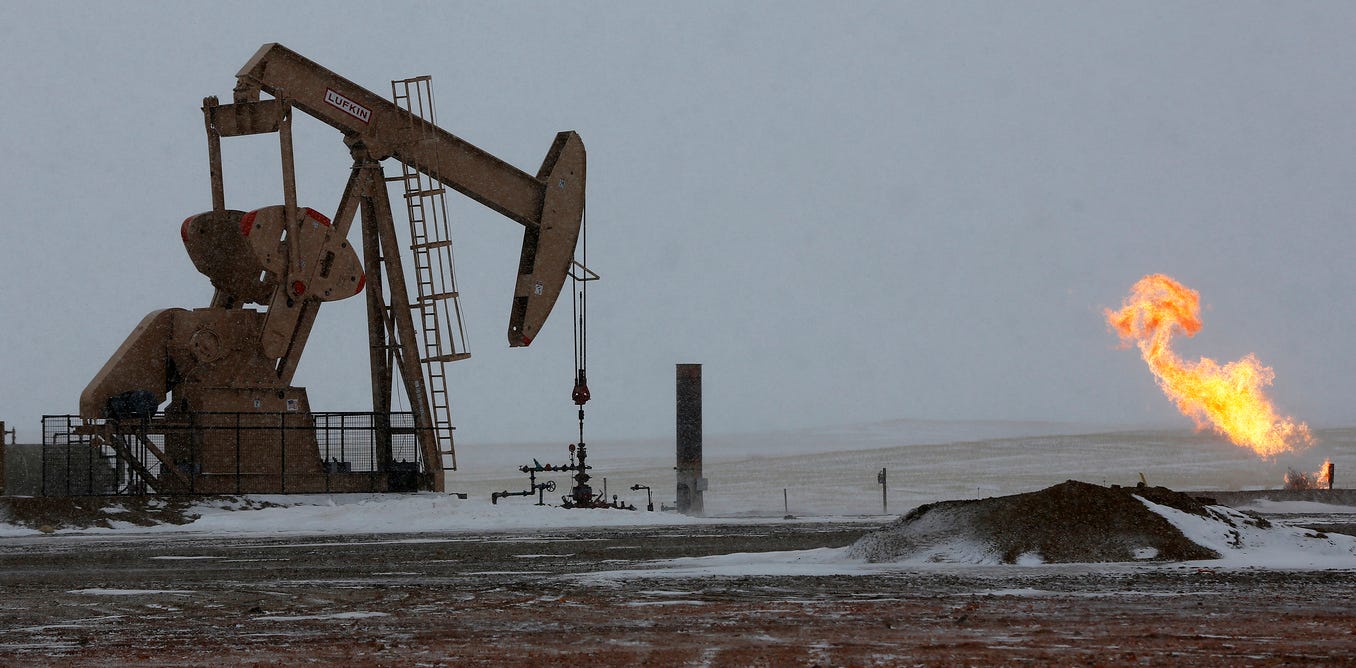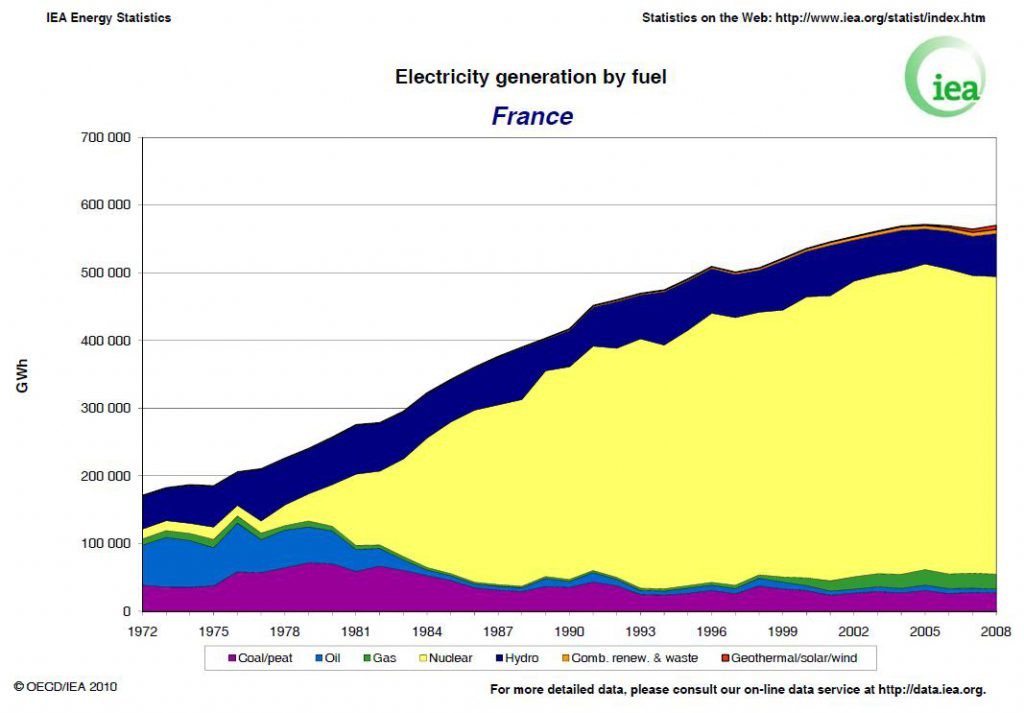We need to complete the Third Energy Transition
Modern history has been dominated by Energy Transitions, but the most recent has stalled due to Green opposition.
Energy is fundamental to life. Using energy life transforms the disorder of the universe into order. Once they lose the ability to do so, life dies. Being an animal humans require energy in the form of food. Without food, we die.
Energy has also been fundamental to human societies. Humans use energy and transform it so that it is useful. It is the foundation of many of our most important technologies.
Some historians have found it useful to think of long periods of history being separated by Energy Transitions. So far, historians have identified three Energy Transitions.
Interestingly, the result of these Energy Transitions has been a fairly dramatic decarbonization by unit of energy over the last century. It is important to note that this trend started long before the start of Green energy policies or scientific knowledge of the effects of human carbon emissions on the climate.
The following is an excerpt from my second book Promoting Progress: A Radical New Agenda to Create Abundance for All. You can order my e-books at a discounted price at my website, or you can purchase full-price ebooks, paperback, or hardcovers on Amazon.
Other books in my “From Poverty to Progress” book series:
See also my other posts on Energy:
The First Energy Transition
The First Energy Transition in human history was the transition from burning wood to burning coal. This transition began in the 16th Century in home heating in London. Coal consumption then gradually spread into industrial applications in the following centuries. It took off with the railway boom of the 1830s and kept increasing well into the 20th Century.
A key reason why the Industrial Revolution was such a key transformation in human history was the widespread use of coal. Coal was the first fossil fuel to be used widely. Without it, industrial growth could not have been sustained in Britain nor could it spread throughout the world. The transition from wood to coal was the first energy transition that involved a change from a diffuse, carbon-intensive energy source to a denser, less carbon-intensive energy source.
While wood has a 10:1 C:H ratio, coal has a C:H ratio of 2:1. So the First Energy Transition involved a shift to denser and less carbon-intensive energy sources (Smil).
Societies made this energy transition, not because they were concerned about climate change (they have never even heard of the concept). They made the transition because coal was a more useful form of energy, largely because it was denser in energy per unit of mass.

It was only with the Industrial Revolution that humans developed fossil fuels, concrete, steel and glass as substitutes for wood. Fossil fuels reduced the need to burn wood. Fossil fuels also reduced the farm acreage needed to grow horse feed. Tractors, synthetic fertilizer and other agricultural technologies reduced the need for more farm acreage. Concrete, steel and glass replaced wood in building, vehicles, and tool construction. All of these technology substitutions were good for the natural environment.
Notice that wood-burning did not go away during the First Energy Transition from wood to coal. Burning wood is still done today, though at a much smaller scale. Energy transitions typically add a new energy source, while diminishing but not eliminating, an old energy source.
The Second Energy Transition
The Second Energy Transition in the late 19th and first two-thirds of the 20th Century was from coal to petroleum. Just as coal was denser and less carbon-intensive than wood, so is petroleum denser and less carbon-intensive than coal. Oil has a 1:2 C:H ratio. Because petroleum is so useful in transportation, it has almost completely replaced coal in that sector. In industry and the electrical sector, though, coal is still widely used.
The Third Energy Transition
The Third Energy Transition in the 20th Century added:
natural gas
hydro-electric dams, and
nuclear power.
So far, natural gas has been the dominant energy source of this transition, for reasons that we will explore later. The Third Energy Transition is still ongoing, and far from complete. So far, this energy transition has done relatively little to reduce coal and petroleum use, but it has the real potential to do so in the future.
Natural gas has a C:H ratio of 1:4, so it releases far less carbon dioxide per unit of energy during combustion. Because it is a gas, it is far less dense by volume. Hydroelectric dams and nuclear power emit no carbon dioxide, except during the construction process.
Notice that, even without any knowledge of climate change, government regulations, or international treaties, our economic system has gradually adopted less carbon-intensive energy sources. Whether measured per capita or per unit of economic growth, global carbon intensity has been cut in half since 1920. In the United States, the decline has been over 80% (Our World In Data).
https://www.researchgate.net/publication/376033415_The_Dark_Side_of_Environmental_Activism
Opposition to the Third Energy Transition
The Third Energy Transition is the only energy transition that has faced substantial political opposition. While governments took little action to oppose the First and Second energy transitions, many Western governments have been quite hostile to the Third.
Due primarily to Green political activism, governments around the world have deliberately constrained the growth of natural gas, nuclear and hydroelectric power. In many cases, they have even tried to dismantle energy infrastructure after it has been constructed.
Slowing the Third Energy Transition down:
undermines economic growth,
lowers the material standard of living of the poor and working class (by increasing energy prices),
traps developing nations in poverty, and
undermines efforts to lower global carbon emissions.
It is of the utmost importance that we roll back these misguided Green energy policies.
Fundamentally, climate activists are arguing for a Fourth Energy Transition to solar, wind, biomass, and other renewable energy sources. I will argue for completing the Third Energy Transition by focusing on natural gas, hydroelectric dams, and nuclear power. As we will see, the latter option is far more conducive to maintaining human progress and lowering global carbon emissions.
Green activists do not realize that the reason for increased global carbon emissions is that the Third Energy Transition has not been completed. And the single biggest reason why it has not been is because of Green political opposition.
So why have overall global carbon emissions increased so much during that period? There have been a few counter-veiling trends over the last two centuries:
Rapid population growth (which has been slowing and is projected to reverse later in this century).
Even more rapid economic growth, powered largely by fossil fuels.
Economic growth has spread to new geographical areas, particularly Asia. Those regions have largely adopted coal, the most carbon-intensive fuel, for geographic and economic reasons.
Developing nations in Asia have not yet reached the level of development where they can participate in the Third Energy Transition under current price structures. Wealthy nations have failed to make those energy sources affordable enough for them to want to do so.
Natural Gas
The cornerstone of the Third Energy Transition is natural gas. While a few nations have abundant hydroelectric resources or a robust electrical grid powered by nuclear power, most nations do not. Unfortunately, nuclear power is currently too expensive in most countries, and it can only generate electricity, so another energy source is needed.
For the United States in particular, successfully making a Third Energy Transition will require a large increase in natural gas production. For a long time, doing so appeared to be geologically impossible, but the dramatic increase in shale gas estimates has shown that it is not only possible, but it is inevitable if government policy does not stand in the way.
Natural gas has an extraordinary number of advantages over other energy sources:
1. The world has 188 trillion cubic meters of proven natural gas reserves, while United States alone has 12.6 trillion (Our World in Data). Given past results, it is extremely likely that actual recovery will be far beyond those amounts.
2. We have enough natural gas to last for generations. Because of constant technological innovations in exploration and drilling, proven natural gas reserves in the United States and the rest of the world keep growing despite constant extraction.
3. American natural gas is affordable, and, thanks to the Shale Revolution, has stable prices (Our World in Data).
4. Natural gas can be used in every sector of the economy: electricity, industry, commercial and home appliances. While 78% of petroleum is used for the transportation sector, and 90% of coal is used for electricity, gas is far more flexible. Gas is commonly used in residences for heating, air conditioning, heating water, cooking and refrigeration. Only within the transportation sector is natural gas less than ideal due to its gaseous form (EIA 2021).
5. Natural gas is the only energy source that can cost-effectively replace coal in industrial uses, for example in metal production (EIA 2021).
6. Natural gas is the only energy source that can cost-effectively replace crude oil in the production of petroleum byproducts (Zeihan 2016).
7. Natural gas emits much less carbon and dramatically less pollutants than coal (Smil 2015).
8. Whether burned directly or consumed via electricity, natural gas is constantly available and easily modulated with little human labor.
9. Natural gas is extremely convenient and clean to use both at home, at commercial sites and within industry.
10. Though pipelines occasionally explode due to poor maintenance, natural gas is extremely safe (Smil 2015).
11. Modern gas turbines offer the most energy-efficient means of converting chemical energy into electricity (EIA).
12. Gas-powered electrical plants have the lowest construction costs and are the quickest to build of any utility (EIA 2018)
13. Natural gas drilling and combustion sites use very little land, although pipelines are fairly land intensive (Zeihan 2016).
14. Gas-powered electrical plants can be run constantly to produce base load electrical power, and they can also be rapidly cycled to produce peak electricity. With the exception of hydroelectric dams, no other energy source can do this (Smil 2015).
15. Natural gas is cost-effective to store and transport via pipelines. It is, however, much more difficult to transport over deep waters (Smil 2015).
16. Natural gas pipelines can transport far greater volumes of energy (10-25 GW) than electric lines (2-3 GW). Energy losses during transmission are also far lower than for electricity (Smil 2015).
For all the reasons listed above, natural gas is an irreplaceable energy source given the current technology. No other energy source comes even close to all the advantages that natural gas possesses. Particularly if you are concerned about lowering global carbon emissions while maintaining economic growth, natural gas is a no brainer.
Despite the enormous subsidies for solar and wind, natural gas is far more widely used. Natural gas made up 24.4% of global energy usage in 2021. In Europe, gas made up 33.6% to total energy usage, while in North America it made up 32.8%. The continent with the lowest natural gas usage is Asia, with 18.4% (Our World In Data).
The Shale Revolution
A rapid transition from coal to natural gas has occurred in the United States over the last 15 years. In 2007, the United States consumed enough coal to produce 2 trillion kilowatt hours of electricity. By 2020 this amount had been cut by almost two-thirds to 773 billion (EIA). Meanwhile, natural gas consumption almost doubled (from 897 to 1624).
The result was a dramatic decline in American carbon emissions. Of the 819 million metric tons decline in CO2 emissions between 2005 and 2019, a full 65% of that decline was caused by replacing coal plants with natural gas plants. Only 30% of the decline was due to renewables (EIA).
While increasing energy efficiency and increasing solar/wind output played some role in lowering coal combustion, it was the Shale Revolution that was the main cause.
In the early 2000s, many energy experts and virtually all environmental activists were sure that the United States was running out of crude oil and natural gas. Since the early 1970s, domestic production had been gradually declining, while imports were increasing. The same was happening to oil-producing countries all over the world. “Peak oil” had supposedly been reached not just in the United States, but also in the rest of the world.
Then the Shale Revolution hit, and everything changed.
Successful Third Energy Transitions
The United States is not the only nation to make rapid progress in the Third Energy Transition. A large part of the reductions in European carbon emissions occurred in the 1980s and early 1990s, long before there were any serious investments in Green energy. During that time period, a huge number of coal power plants that had been built decades earlier reached their age of retirement (fossil fuel plants typically last 40-50 years). These obsolete coal plants were largely replaced by natural gas, nuclear or hydroelectric plants.
For example, coal consumption in the United Kingdom peaked in 1956, decades before we knew anything about climate change. Between 1956 and 1999 coal consumption declined steadily, long before Green energy policies were introduced.
How did the UK achieve this decline? Mainly by radically increasing the use of natural gas and nuclear power. Declining coal usage fits in nicely with the concept of the Third Energy Transition, as opposed to Green energy policies.
France and Belgium achieved the Third Energy Transition in electricity via nuclear power. Coal production in those two nations peaked in 1957. Both nations initiated a massive nuclear construction program, which made phasing out coal relatively simple.
Finland, Sweden and Switzerland followed less aggressive nuclear programs, but they also exploited their local hydroelectric resources.
Norway achieved the Third Energy Transition in electricity by focusing almost entirely on hydroelectric dams. Brazil and Canada did much the same. Again, the Third Energy Transition at work.
Germany is another example, at least for a while. German coal consumption peaked in 1958 and then slowly declined. Germany’s steepest declines in coal usage occurred between 1989 and 1999, when East Germany’s obsolete coal stations were taken offline and replaced with of natural gas plants. Again, this was the Third Energy Transition at work.
Since Germany announced its famous Energy Turn in the early 2000s, coal consumption has actually declined at a slower rate than during the previous period. Rather than eliminating coal, which was entirely feasible, Germany tried to eliminate natural gas and nuclear production.
For this reason, coal still makes up about 30% of electrical power generation in Germany (more than in the United States). Just as importantly, coal is still the backbone of Germany’s famous export industries.
Even worse, Germany did not really cut natural gas consumption. Instead, it cut natural gas production and made up the difference by importing gas from Russia. This made Germany dangerously dependent upon an aggressive, authoritarian power. The dangers of this policy were fully exposed when Russia invaded Ukraine in 2022.
When one adds in the Shale Gas Revolution in the United States, we can see many examples where nations radically lowered their carbon emissions while maintaining abundant, affordable and secure electrical grids. They did so not with Green energy policies, but through the Third Energy Transition (switching from coal to a blend of natural gas, nuclear, and hydroelectric). Each nation did so in a different way due to geographical, economic and political factors, but they all succeeded.
See also my other posts on Energy:
The above was an excerpt from my second book Promoting Progress: A Radical New Agenda to Create Abundance for All. You can order e-books at a discounted price at my website, or you can purchase full-price ebooks, paperback, or hardcovers on Amazon.
Other books in my “From Poverty to Progress” book series:



















